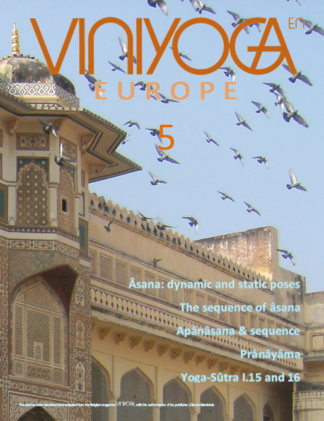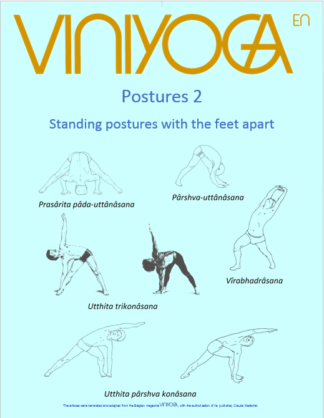Description
(84 pages) – all the chapters of this magazine were published in Viniyoga Europe 5, 6, 7, 8, 9, 12, 13 and 18.
Elementary rules to be followed when building a sequence
The way how several âsana are mutually prepared, added and compensated determines the harmony and efficiency of the sequence; this follows certain rules. In this chapter we will see the most fundamental ones (vinyâsa krama).
Sequence & intensity
Part 1 – Choosing the intensity of a sequence allows us to experience poses in a more precise way. This intensity is physical, respiratory and mental. This chapter presents three different examples of physical effort to illustrate different levels of intensity: light, average and intense.
Part 2 – Here, we are going to elaborate on the relationship between physical effort and the object of attention (bhâvana). Using an example, we will explain how to simplify or intensify physical effort and breathing. This allows the pose to be adapted to the characteristics of the person in order for “stability-comfort” (sthira-sukha) to be experienced.
Shape & function of sthiti (standing) and supta (lying) sequences
A sequence of âsana can present particular characteristics because of the inclusion of a relevant number of postures of the same kind. Its function is related to the way it is built. This chapter presents a “standing” sequence and a “lying” sequence.
Shape and function of viparîta (inverted) and âsana (seated) sequences
Construction and function of “inverted” and “seated” sequences.
Symmetry and asymmetry
Part 1 – In a sequence of âsana the right combination of symmetrical and asymmetrical postures works on all parts of the body and reorganizes and harmonizes its tonus. We can combine these two large categories of postures in several ways in order to perform interesting explorations of the body and benefit from their effects.
Part 2 – Here are four sequences of âsana that illustrate the enormous variety of associations of symmetrical and asymmetrical postures. We use a model that is similar to chanted recitation (which suggests internal and external efforts) to help us understand the kind of work and the effects of symmetrical and asymmetrical postures.
Time, duration and function
Time, duration and content of a sequence are the parameters that produce its effects. This theme is illustrated with a long sequence, from which it is easy to construct other sequences with average and short durations.
Appendix: One way to classify poses
Yoga âsana can be classified according to diverse parameters, such as their shape, function, symmetry or intensity.





